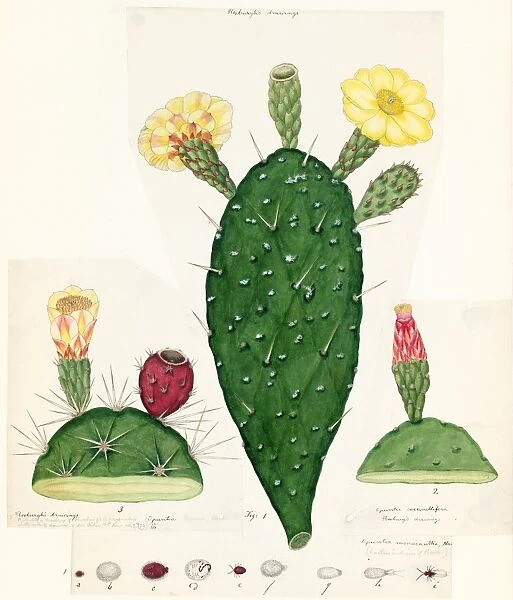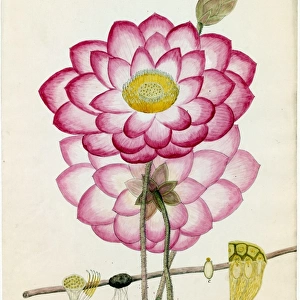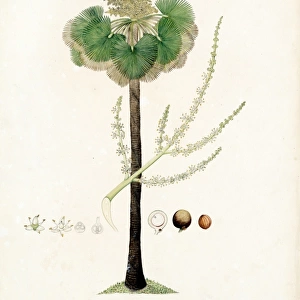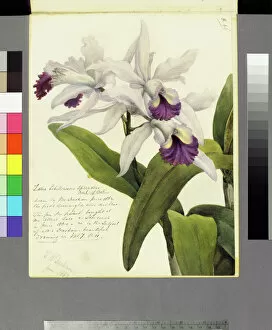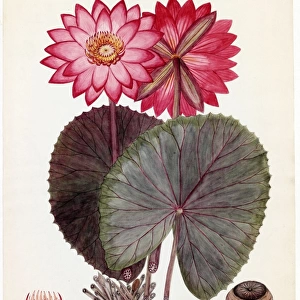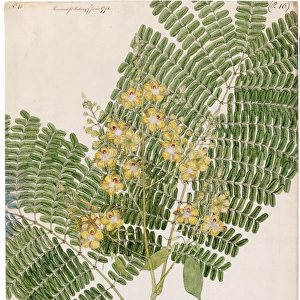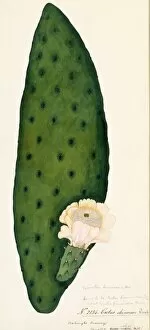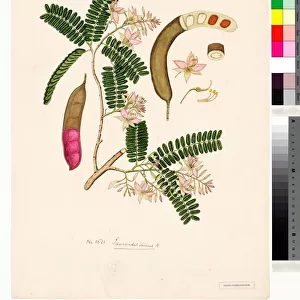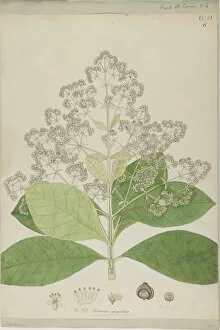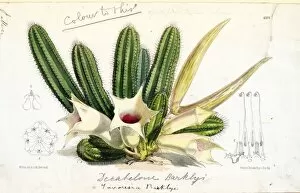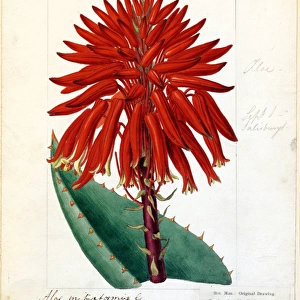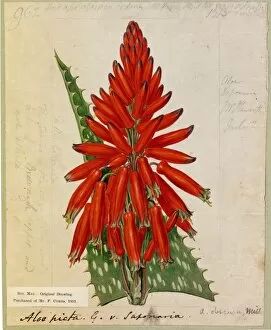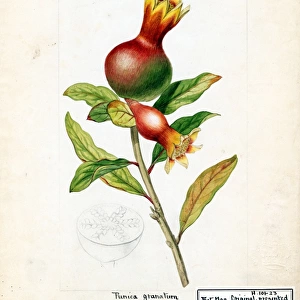Rights Managed > Botanical Art > William Roxburgh
Cactus indicus, ca 18th century
Purchase This Item For Download
world rights, single editions, non exclusive use
Filename: ROX00001028.jpg
Size: 3496 x 4088 (3.9MB)
Date: 3rd December 2007
Credit: © The Board of Trustees of the Royal Botanic Gardens, Kew
© The Board of Trustees of the Royal Botanic Gardens, Kew
![]()
Wall Art and Photo Gifts from Kew Images
Cactus indicus, ca 18th century
Watercolour on paper, ca late 18th century. Hand painted copy of an illustration commissioned by William Roxburgh.
Roxburgh noted in his Flora Indica that this cactus was common around Calcutta, and concluded there is every reason to imagine it is a native of these countries. These plants were probably introduced to India from the West Indies as early as the late 15th Century, initially for their fruit, and later for the dye made from cochineal insects (Dactylopius coccus) which infect these plants. The drawing includes studies of these insects, the winged male can be seen far right, the female with her protective white covering in several stages on the left. It is likely that there are actually three plant species represented on this drawing. Fig.1 is possibly Opuntia stricta/dillenii, Fig.2 Nopalea cochenillifera, and Fig.3 Opuntia tuna
Media ID 654458
© The Board of Trustees of the Royal Botanic Gardens, Kew
18th Century Botanical Art Cactaceae Cacti East India Company Economic Botany India Insect Useful Plants William Roxburgh Collection Yellow
FEATURES IN THESE COLLECTIONS
> Botanical Art
> Cacti and Succulents
> Botanical Art
> William Roxburgh
MADE IN THE USA
Safe Shipping with 30 Day Money Back Guarantee
FREE PERSONALISATION*
We are proud to offer a range of customisation features including Personalised Captions, Color Filters and Picture Zoom Tools
SECURE PAYMENTS
We happily accept a wide range of payment options so you can pay for the things you need in the way that is most convenient for you
* Options may vary by product and licensing agreement. Zoomed Pictures can be adjusted in the Cart.

